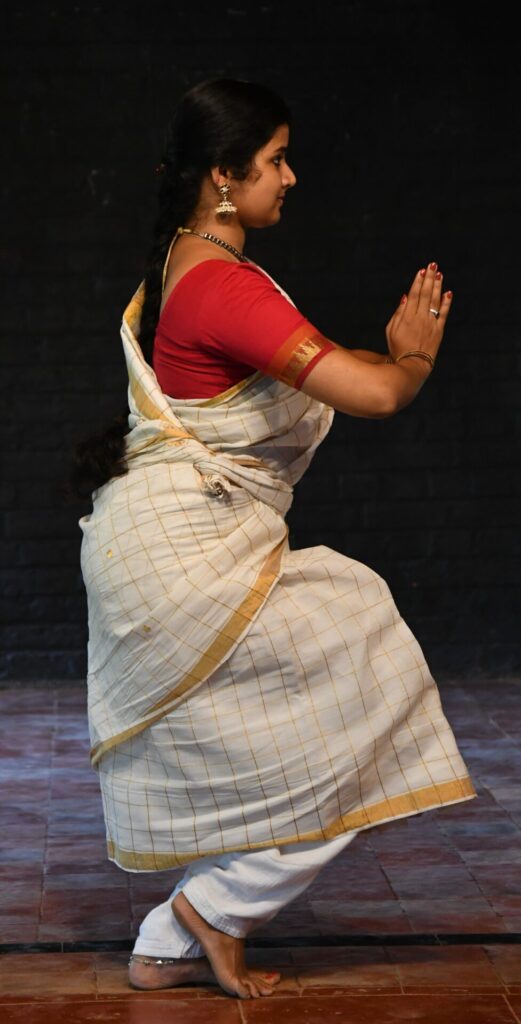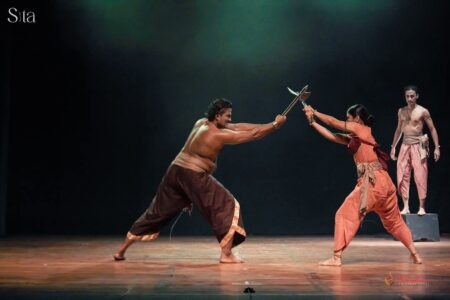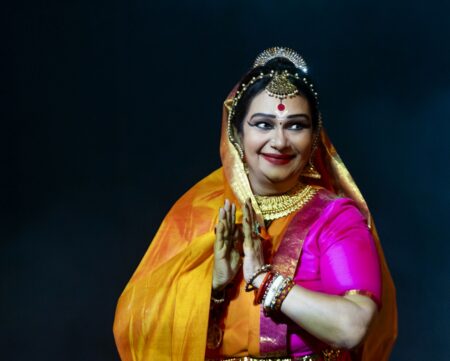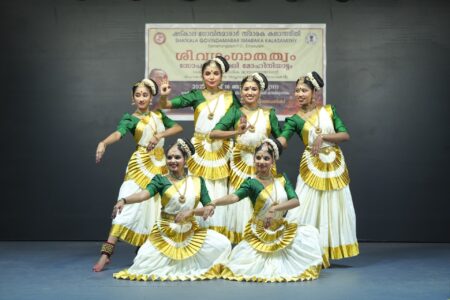The Dance of The Divine Swan
Swan represents various philosophical and spiritual notions in Hinduism. Swan movement in Mohiniyattam is very gentle and beautiful.
After opening with Namaskaram , we moved to the next step, that is, studying different leg movements in Mohiniyattam. We elaborately discussed different mandalams such as Sama Mandalam, Kal Mandalam, Ara Mandalam, Mukkal Mandalam and Muzhu Mandalam and further delved into the influence of the concept of mandalas or sacred geometrical designs in Mohiniyattam. We continue our journey into commonly used footwork in this dance form.
Movement is the method
Superficially, dance is a compilation of movements. However, if we take a closer look, we can readily observe that dance forms have a rich legacy that have imbibed the history and culture of civilisations over centuries, their connection with nature and geography of the region they existed in.
Exploring these multiple layers in the external structure and internal substance of Mohiniyattam has been my hobby and I think it helps dancers and connoisseurs better understand the aesthetics and philosophy of Mohiniyattam.
That is why I am documenting these observations.

For starters, I looked to my immediate surroundings – from the readily observable connections of Mohiniyattam dance with the movements in nature. I start with the footwork used in Mohiniyattam that is named after real and mythical creatures found either in Kerala or the literature that were born here.
My guru Kalyanikkutti amma taught me the footwork as five different movements.
They are
- Hamsa Pada or the swan movement
- Kukkuda pada or the movement of the hen
- Mayoora Pada or the peacock movement
- Mandooka Pada or the frog movement and
- Naga Bandha, the Serpent movement
Hamsa Pada
The first footwork is Hamsa Pada, the Swan movement. Swan is a mythical bird that is portrayed in the Puranas and epics. This movement imitates the movement of the Swan. It is truly amazing, just in itself, that the movement of an imaginary bird is explained in great detail in the literature so that it could be imitated in our dance forms. This movement has the feet grounded with only the front end of the feet and toes. Following the rhythm, the dancer places the sole down and raises it before the next beat. The body moves down as the leg is raised and moves up when the sole is placed on the ground. This pattern of gentle movement is repeated with the rhythm and with a little acceleration of the body when it moves up as if in a spring action.

There could be several reasons why the Swan movement found its space in Mohiniyattam. The primary reason is it is very gentle and beautiful and suits the style of Mohiniyattam. Culturally this bird has great relevance in the Indian epics and puranas.
Arayanna or heavenly swan is said to have lived in Manasasaras (Manasasarovar) in the Himalayas. It is also an integral part of the immortal love story of Nala and Damayanthi of Mahabharatha. Swan is portrayed with great relevance in interpretations of philosophies like Advaita Vedanta.
Swan is often portrayed as a bird with dual qualities of beauty and wisdom. Its body doesn’t get wet even when it swims in water. And what’s more, the bird can also fly. The mythical swan is also considered to possess the magical ability to separate milk from water and drink it. These are symbolically used to depict the ability of Vedantins to lead an earthly life and, at the same time, be detached from their body and remain in union with the Paramatma or the supreme self. Such spiritual masters are often referred to as Paramahamsa, which literally translates into ‘supreme swan’.
The aesthetic beauty
In the literal sense of the word, Hamsa is formed by the joining of two Sanskrit terms, ‘Aham’ meaning ‘I’ and ‘Sa’ meaning ‘he’ – meaning the supreme self. This again represents the merger of the worldly self and the supreme self. The wave-like movement of a swan, in a philosophical interpretation, depicts the attempts of an aspiring jeevathma to merge with the paramathma.
The Hamsa Pada in Mohiniyattam offers a lot of aesthetic opportunities for the dancer. The beautiful feminine movement of the swan is praised in the epics and is often used to compare the graceful walk of beautiful women.
Thus, Hamsa Pada provides a lot of aesthetic and philosophical opportunities for a Mohiniyattam dancer. The vedantic context of jeevathma and paramathma relationship is particularly relevant for the themes that Mohiniyattam repertoire usually explores.
Photo Courtesy: Natanakairali Archives
(Assisted by Sreekanth Janardhanan)
Click here for more on the series
Write to us at [email protected]




